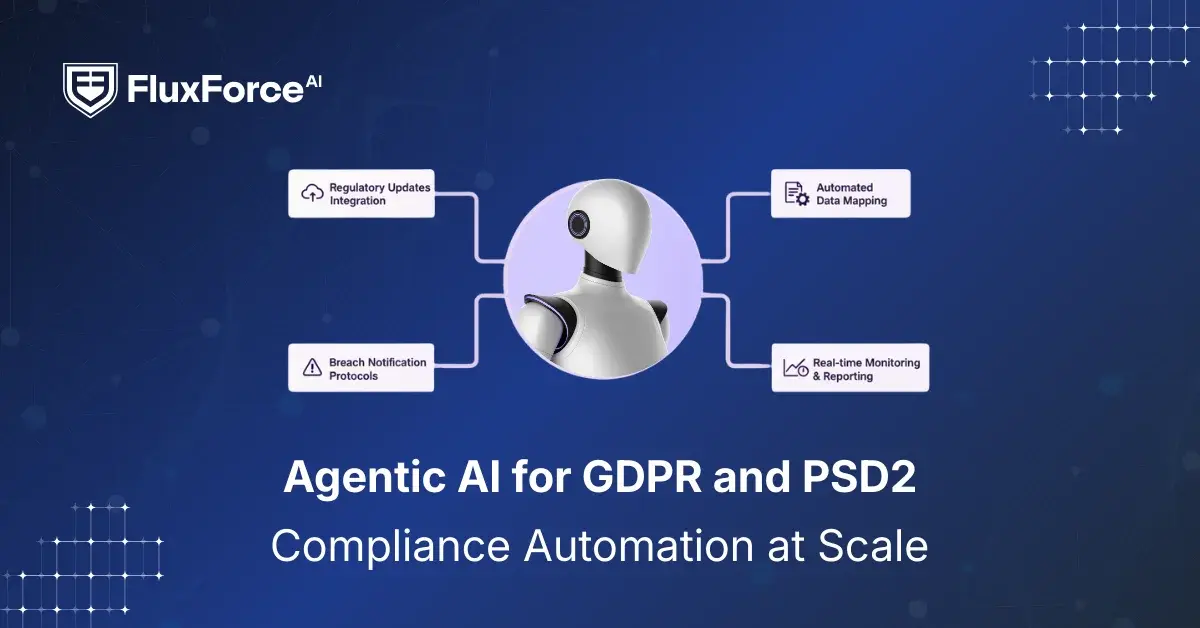Listen to our podcast 🎧

Introduction
For years, supply chain leaders have invested heavily in compliance frameworks and manual workforce. In 2024, more than half of global organizations invested over $10 million in supply chain operations, yet even with significant investments, vulnerabilities in document processing continue to shake resilience.
Trade documentation is the foundation of every high-risk supply chain, but its verification process remains fragmented, slow, and error prone. These gaps expose organizations to fraud, regulatory penalties, and operational disruption.
AI-driven trade document verification has emerged as a strategic tool for CISOs tasked with protecting global trade operations. Through automated processes, it helps organizations reduce verification errors, strengthen compliance, and save millions from potential losses.
However, adoption without a clear security strategy limits its impact. This article outlines actionable, end-to-end AI strategies that CISOs can implement to secure trade documentation, mitigate risk, and strengthen supply chain resilience.
Key Vulnerabilities in High-Risk Supply Chain Trade Document Processing

High-risk supply chains rely heavily on trade documents. Any vulnerabilities in verification processes often increase exposure to fraud, errors, and compliance violations. Common practices that cause these issues include:
1. Dependency on Manual Verification
- Manual checks of invoices, shipment details, and product certificates increase the risk of missed inconsistencies.
- Errors in invoice amounts or payment details while reporting create compliance gaps and financial risks.
- High-volume document workflows overwhelm manual teams, ultimately causing delays and ineffective verification.
2. Supplier-Side Document Risks
- Suppliers providing incomplete or non-standardized documents complicate verification and increase the chances of errors.
- Misrepresented production or shipment details leave organizations vulnerable to financial losses and operational disruptions.
- Limited access to supplier records prevents thorough verification.
3. Lack of Online Document Verification Adoption
- Without AI verification tools, complex document errors remain unnoticed, and risk identification is ineffective.
- Disconnected systems stop real-time validation and create gaps in compliance checks.
- Limited analytics reduce early risk detection and slow proactive response.
Leveraging Artificial Intelligence in Trade Compliance and Document Security

Validating trade documents is essential for ensuring compliance and organizational safety. AI-driven trade document verification enables faster checks, reduces errors, and flags risks early, helping organizations secure high-risk supply chains.
Key advantages include:
1. Automated Document Validation- AI-driven document verification system enables automated scanning of invoices, shipping details, and certificates against regulations and internal records. It leverages OCR (Optical Character Recognition) and NLP (Natural Language Processing) to process even unstructured data provided by suppliers.
2. Advanced Fraud Detection- AI uses machine learning algorithms to detect hidden fraud or manipulation in invoices and certificates. It analyses HS codes, supplier behaviour, and transaction histories against thousands of external databases to identify suspicious activities across high-risk trade environments.
3. Real-Time Compliance Monitoring- Integrating AI for high-risk supply chain compliance enables continuous validation of trade documents against evolving regulatory frameworks worldwide. These systems adapt to changing rules through rule-based automation, ensuring company and third-party documents remain compliant across regions.
4. Scalable Processing for High-Volume Trade Flows- AI-enabled digital document verification can handle thousands of trade documents simultaneously. Rather than manually screening through HS Codes, supplier records, or quantity irregularities, it automatically runs checks to reduce errors and delays. This scalability ensures faster compliance checks and supports uninterrupted trade operations.
Stop Fraud Before It Strikes
End-to-End AI-Driven Supply Chain Security Strategies for CISOs
 The role of AI-powered solutions in securing high-risk supply chain networks is already proving transformative. As of now, in 2025, nearly 46% of organizations are leveraging the technology for risk management and compliance.
The role of AI-powered solutions in securing high-risk supply chain networks is already proving transformative. As of now, in 2025, nearly 46% of organizations are leveraging the technology for risk management and compliance.
Here’s how CISOs can secure supply chain trade documents and workflows with AI:
1. Integrate AI-Powered Verification Platforms with Existing Systems
CISOs should quickly deploy AI-driven verification engines directly within ERP and SCM platforms. This integration enables real-time trade document scanning without disrupting existing workflows. For securing high-risk supply chains from day one, organizations should consider deploying pre-built AI modules developed by Flux Force.
2. Build Automated Supplier Onboarding Framework
Integrating AI solutions into supplier onboarding processes ensures only compliant and verified partners are approved. Automated background checks against registries and watchlists significantly. restrict the entry of fraudulent entities into sensitive trade networks.
3. Implement Real-Time Anomaly Detection Across Trade Documents
AI systems trained on historical trade flows can flag irregularities as documents are submitted. By cross-checking shipment routes, invoice histories, and customs data, organizations can get instant alerts on suspicious activity before clearance or payment.
4. Deploy Predictive Analytics for High-Risk Trade Routes
Certain trade routes or commodities carry elevated risk profiles. AI predictive models forecast potential disruptions by analysing current geopolitical events, historical patterns, and market signals.
5. Establish Continuous Monitoring Dashboards
Integrating AI-driven dashboards into systems give CISOs a consolidated view of risks across suppliers, shipments, and transactions. With real-time visualization of anomalies, decision-makers can prioritize interventions, allocate resources effectively, and prepare audit-ready reports.
6. Adopt Adaptive AI Models for Evolving Compliance Requirements
In global trade supply chains, compliance regulations shift frequently. Adaptive AI models update themselves with new regulatory data, minimizing delays caused by rule changes. This agility allows CISOs to maintain compliance without constant manual reprogramming.
-1.png?width=1200&height=628&name=hubspot%20blog%20(6)-1.png)
Shaping the Future of AI in Finance
Fluxforce research uncovers how banks and enterprises are adapting to fraud, compliance, and data challenges in 2025.
Conclusion
High-risk supply chains often remain vulnerable to errors, fraud, and regulatory gaps in trade documents. While manual verification fail scale to handle complex, high-volume workflows, AI strengthens workflows by automating document validation, detecting anomalies, and delivering predictive insights across suppliers and transactions.
AI’s capabilities in distribution of risks in supply chain reduces operational and financial risk while keeping trade operations compliant with evolving regulations.
For CISOs, integrating AI transforms organizations from fragmented verification processes to a unified, resilient system that provides complete visibility and proactive control over high-risk trade operations.






Share this article